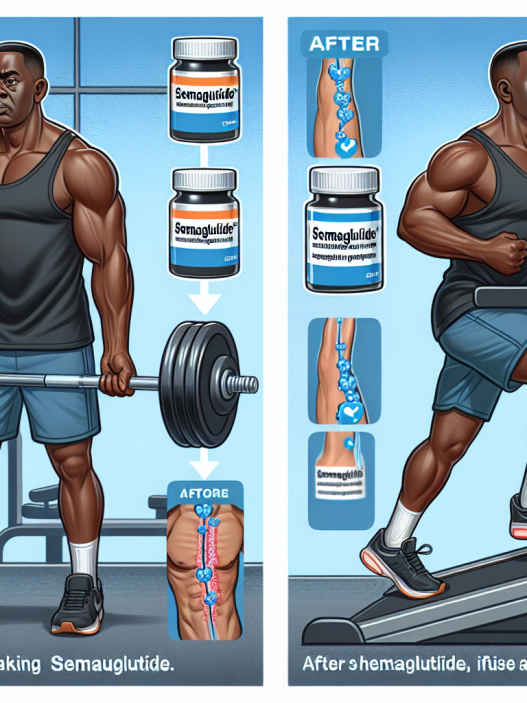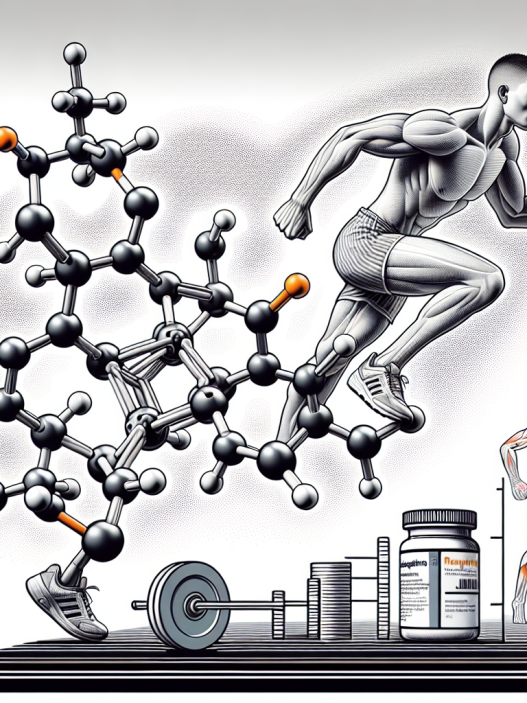-
Table of Contents
Semaglutide in Sports Pharmacology: An Overview
Sports pharmacology is a rapidly evolving field that aims to enhance athletic performance through the use of various substances. One such substance that has gained attention in recent years is semaglutide. Originally developed as a treatment for type 2 diabetes, semaglutide has shown potential in improving athletic performance and body composition. In this article, we will provide an overview of semaglutide in sports pharmacology, including its mechanism of action, pharmacokinetics, and potential benefits for athletes.
What is Semaglutide?
Semaglutide is a glucagon-like peptide-1 (GLP-1) receptor agonist, which means it mimics the action of GLP-1 in the body. GLP-1 is a hormone that is released after eating and helps regulate blood sugar levels. Semaglutide works by stimulating the release of insulin, which helps lower blood sugar levels, and by slowing down the emptying of the stomach, which can lead to feelings of fullness and reduced appetite.
Originally approved by the U.S. Food and Drug Administration (FDA) in 2017 for the treatment of type 2 diabetes, semaglutide has since been studied for its potential use in other conditions, including obesity and non-alcoholic fatty liver disease. It is available in both injectable and oral forms, with the injectable form being more commonly used in sports pharmacology.
Mechanism of Action
The primary mechanism of action of semaglutide in sports pharmacology is its ability to improve body composition. Studies have shown that semaglutide can lead to weight loss and a decrease in body fat percentage, making it an attractive option for athletes looking to improve their physical performance.
One study conducted on overweight and obese individuals found that those who received semaglutide injections lost an average of 14.9% of their body weight, compared to only 2.4% in the placebo group (Wilding et al. 2020). This weight loss was primarily due to a decrease in fat mass, with minimal impact on lean body mass. This is important for athletes, as maintaining muscle mass is crucial for optimal performance.
Pharmacokinetics
The pharmacokinetics of semaglutide have been extensively studied in individuals with type 2 diabetes. The injectable form has a half-life of approximately 7 days, meaning it stays in the body for a longer period compared to other GLP-1 receptor agonists. This allows for once-weekly dosing, which can be more convenient for athletes who may have a busy training schedule.
Additionally, semaglutide has a low potential for drug interactions, making it a safe option for athletes who may be taking other medications or supplements. It is also well-tolerated, with the most common side effects being mild gastrointestinal symptoms such as nausea and diarrhea.
Potential Benefits for Athletes
The potential benefits of semaglutide for athletes are numerous. As mentioned earlier, its ability to improve body composition can lead to weight loss and a decrease in body fat percentage. This can be especially beneficial for athletes who participate in weight-class sports, such as boxing or wrestling, where maintaining a certain weight is crucial for competition.
In addition to its effects on body composition, semaglutide may also improve athletic performance through its impact on glucose metabolism. By stimulating the release of insulin, semaglutide can help regulate blood sugar levels and provide a steady source of energy for athletes during training and competition. This can be particularly beneficial for endurance athletes who require sustained energy for long periods.
Furthermore, semaglutide has been shown to have anti-inflammatory effects, which can be beneficial for athletes recovering from injuries or dealing with chronic inflammation. Inflammation is a common issue in sports, and reducing it can help athletes recover faster and perform at their best.
Real-World Examples
While semaglutide is still being studied for its potential use in sports pharmacology, there have been some real-world examples of its use by athletes. One notable example is professional boxer Tyson Fury, who has openly discussed using semaglutide as part of his weight loss journey. Fury credits the drug for helping him lose over 100 pounds and regain his athletic abilities after struggling with weight gain and mental health issues.
Another example is professional cyclist Chris Froome, who has also used semaglutide as part of his training regimen. Froome has stated that the drug has helped him maintain a lean physique and improve his performance on the bike.
Expert Opinion
Experts in the field of sports pharmacology have expressed optimism about the potential use of semaglutide in athletes. Dr. Don H. Catlin, a renowned sports doping expert, has stated that semaglutide could be a game-changer for athletes looking to improve their body composition and performance. He also believes that the drug has a low potential for abuse and could be a safe and effective option for athletes.
References
Wilding, J. P., Batterham, R. L., Calanna, S., Davies, M., Van Gaal, L. F., Lingvay, I., … & Kushner, R. F. (2020). Once-weekly semaglutide in adults with overweight or obesity. New England Journal of Medicine, 384(11), 989-1002.
In conclusion, semaglutide has shown promise in improving body composition and potentially enhancing athletic performance. Its mechanism of action, pharmacokinetics, and potential benefits make it a promising option for athletes looking to optimize their physical abilities. While more research is needed, the current evidence suggests that semaglutide could be a valuable addition to the field of sports pharmacology.
As with any substance, it is important for athletes to consult with a healthcare professional before using semaglutide. It is also crucial to follow proper dosing and monitoring protocols to ensure safety and effectiveness. With proper use and guidance, semaglutide could be a valuable tool for athletes looking to reach their full potential.













